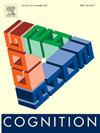Medial temporal cortex supports object perception by integrating over visuospatial sequences
IF 2.8
1区 心理学
Q1 PSYCHOLOGY, EXPERIMENTAL
引用次数: 0
Abstract
Perception unfolds across multiple timescales. For humans and other primates, many object-centric visual attributes can be inferred ‘at a glance’ (i.e., given 200 ms of visual information), an ability supported by ventral temporal cortex (VTC). Other perceptual inferences require more time; to determine a novel object’s identity, we might need to represent its unique configuration of visual features, requiring multiple ‘glances.’ Here we evaluate whether medial temporal cortex (MTC), downstream from VTC, supports object perception by integrating over such visuospatial sequences. We first compare human visual inferences directly to electrophysiological recordings from macaque VTC. While human performance ‘at a glance’ is approximated by a linear readout of VTC, participants radically outperform VTC given longer viewing times (i.e., 200 ms). Next, we leverage a stimulus set that enables us to characterize MTC involvement in these temporally extended visual inferences. We find that human visual inferences ‘at a glance’ resemble the deficits observed in MTC-lesioned human participants. By measuring gaze behaviors during these temporally extended viewing periods, we find that participants sequentially sample task-relevant features via multiple saccades/fixations. These patterns of visuospatial attention are both reliable across participants and necessary for MTC-dependent visual inferences. These data reveal complementary neural systems that support visual object perception: VTC provides a rich set of visual features ‘at a glance’, while MTC is able to integrate over the sequential outputs of VTC to support object-level inferences.
内侧颞叶皮层通过整合视觉空间序列来支持物体感知
感知在多个时间尺度上展开。对于人类和其他灵长类动物来说,许多以物体为中心的视觉属性可以“一眼”推断出来(即,给定200毫秒的视觉信息),这种能力是由腹侧颞叶皮层(VTC)支持的。其他知觉推断需要更多的时间;为了确定一个新物体的身份,我们可能需要表示其独特的视觉特征配置,这需要多次扫视。“在这里,我们评估VTC下游的内侧颞叶皮层(MTC)是否通过整合这些视觉空间序列来支持物体感知。”我们首先将人类的视觉推断直接与猕猴VTC的电生理记录进行比较。虽然人的“一瞥”表现近似于VTC的线性读数,但在较长的观看时间(即200毫秒)下,参与者的表现远远超过VTC。接下来,我们利用刺激集,使我们能够表征MTC参与这些时间扩展的视觉推断。我们发现,人类的视觉推断“一眼”类似于mtc损伤的人类参与者所观察到的缺陷。通过测量这些暂时延长的观看期间的凝视行为,我们发现参与者通过多次扫视/注视顺序取样任务相关特征。这些视觉空间注意模式在参与者中是可靠的,并且对于依赖于mtc的视觉推断是必要的。这些数据揭示了支持视觉对象感知的互补神经系统:VTC提供了一套丰富的视觉特征“一目了然”,而MTC能够整合VTC的顺序输出以支持对象级推理。
本文章由计算机程序翻译,如有差异,请以英文原文为准。
求助全文
约1分钟内获得全文
求助全文
来源期刊

Cognition
PSYCHOLOGY, EXPERIMENTAL-
CiteScore
6.40
自引率
5.90%
发文量
283
期刊介绍:
Cognition is an international journal that publishes theoretical and experimental papers on the study of the mind. It covers a wide variety of subjects concerning all the different aspects of cognition, ranging from biological and experimental studies to formal analysis. Contributions from the fields of psychology, neuroscience, linguistics, computer science, mathematics, ethology and philosophy are welcome in this journal provided that they have some bearing on the functioning of the mind. In addition, the journal serves as a forum for discussion of social and political aspects of cognitive science.
 求助内容:
求助内容: 应助结果提醒方式:
应助结果提醒方式:


